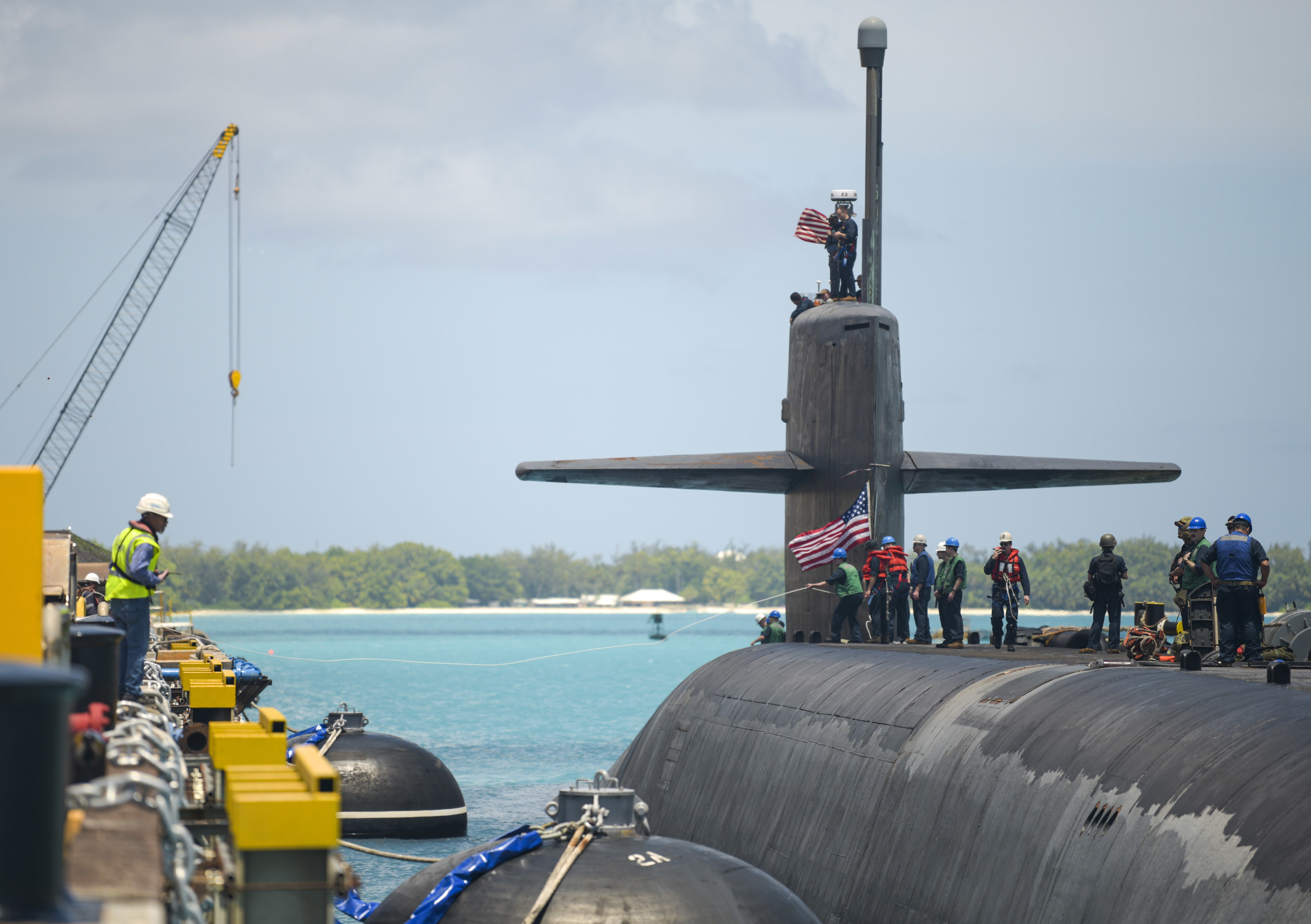The United States has applauded a landmark deal between the United Kingdom and Mauritius that secured its continued use of Diego Garcia, a vital British and American joint military outpost in the Indian Ocean.
The future of the strategic atoll was addressed at the top of Britain’s announcement on Thursday of a “historic political agreement” to transfer sovereignty of the Chagos Archipelago to Mauritius, which has maintained a claim to the islands for decades. A future treaty to that effect will end London’s administration of what it currently calls the British Indian Ocean Territory.
U.S. Navy via AP
Diego Garcia, the largest in the Chagos group in the central Indian Ocean, is about 1,300 miles northeast of Mauritian capital Port Louis. For half a century, it has been a staging area for major coalition missions in the Middle East, including the Gulf War and the Iraq War.
For an initial period of 99 years, the U.K. will be authoritized to exercise sovereign rights over Diego Garcia, according to the agreement. The deal ensures continued operations at Camp Thunder Cove, part of the military base known as Naval Support Facility Diego Garcia, used by the U.S. Navy, U.S. Air Force and the British armed forces.
“It enables the United States to support operations that demonstrate our shared commitment to regional stability, provide rapid response to crises, and counter some of the most challenging security threats we face,” U.S. President Joe Biden said in a statement. “The agreement secures the effective operation of the joint facility on Diego Garcia into the next century.”
U.S. Defense Secretary Lloyd Austin said the agreement would help safeguard British and American “strategic security interests” in the Indo-Pacific region. U.S. Secretary of State Antony Blinken called the deal “a win for diplomacy.”
The importance of the Indian Ocean—long viewed by India as its background—has risen along with the economic and military growth of China, a strategic competitor of the U.S. and its allies. Beijing’s presence in the region has been a point of contention for New Delhi, America’s new security partner.
Perhaps the most far-reaching British foreign policy decision so far by the Labour government led by Prime Minister Keir Starmer, the deal with Mauritius has been criticized by members of the opposition Conservative Party.
Tom Tugendhat, Britain’s former security minister and a leading candidate for Tory leader, said Mauritius was now “free to rent” the Chagos Islands to countries including China, potentially offering Beijing “a military foothold in the Indian Ocean.”
China’s naval support base in Djibouti in the horn of Africa remains its only publicly acknowledged overseas military facility, according to Newsweek‘s map of American and Chinese bases around the world.
David Lammy, Britain’s foreign secretary, said the agreement had U.S. support and would “protect international security, close a potential illegal migration route, and avert threats to peace and prosperity in the Indian Ocean.”
China’s foreign ministry did not immediately return a request for comment.

Staff Sgt. Whitney Erhart/U.S. Air National Guard
Mauritius had been under British rule since 1814 before it gained independence in 1968, formally splitting from the Chagos Archipelago in the process. In 1966, Britain leased Diego Garcia to the United States, and it remains off limits to non-military personnel.
Diego Garcia’s location outside the cyclone belt is part of its appeal, as is its equidistant proximity to the east coast of Africa and Indonesia’s island of Aceh in southeast Asia.
The island is an important forward operating base for the U.S. Air Force‘s bomber fleet. Two B-52H strategic bombers deployed to Diego Garcia from late March to early April. In August, a B-2 bomber conducted hot-pit refueling at its air base.
“Strategically located in the heart of the Indian Ocean, Diego Garcia provides a key platform for U.S. military operations, enabling rapid response capabilities across the vast Indo-Pacific region,” the Air Force said of the B-52H’s deployment.
Diego Garcia is 2,570 miles from the Strait of Hormuz, a strategic waterway connecting the Indian Ocean to the Persian Gulf, and it is 2,390 miles from the Bab al-Mandeb Strait, leading to the Red Sea.
The island could serve as an alternate bomber base, complementing the U.S. territory of Guam in the Western Pacific Ocean, for operations in the contested South China Sea, which is about 2,300 miles away.

Mass Communication Specialist 2nd Class Jan David De Luna Mercado/U.S. Navy
The U.S. Navy says the atoll supports logistical operations for forward-deployed forces in the Indian Ocean and the Persian Gulf, including surface warships and submarines.
One year ago, the USS West Virginia, an Ohio-class ballistic missile submarine armed with up to 20 nuclear-tipped missiles, visited the island as part of its deterrence operations in the Middle East and the Indo-Pacific region.
IThe Ohio-class cruise missile submarine USS Florida, armed with 154 Tomahawk missiles, conducted a port visit in February following its deployment to the region amid Israel’s war with Hamas.


